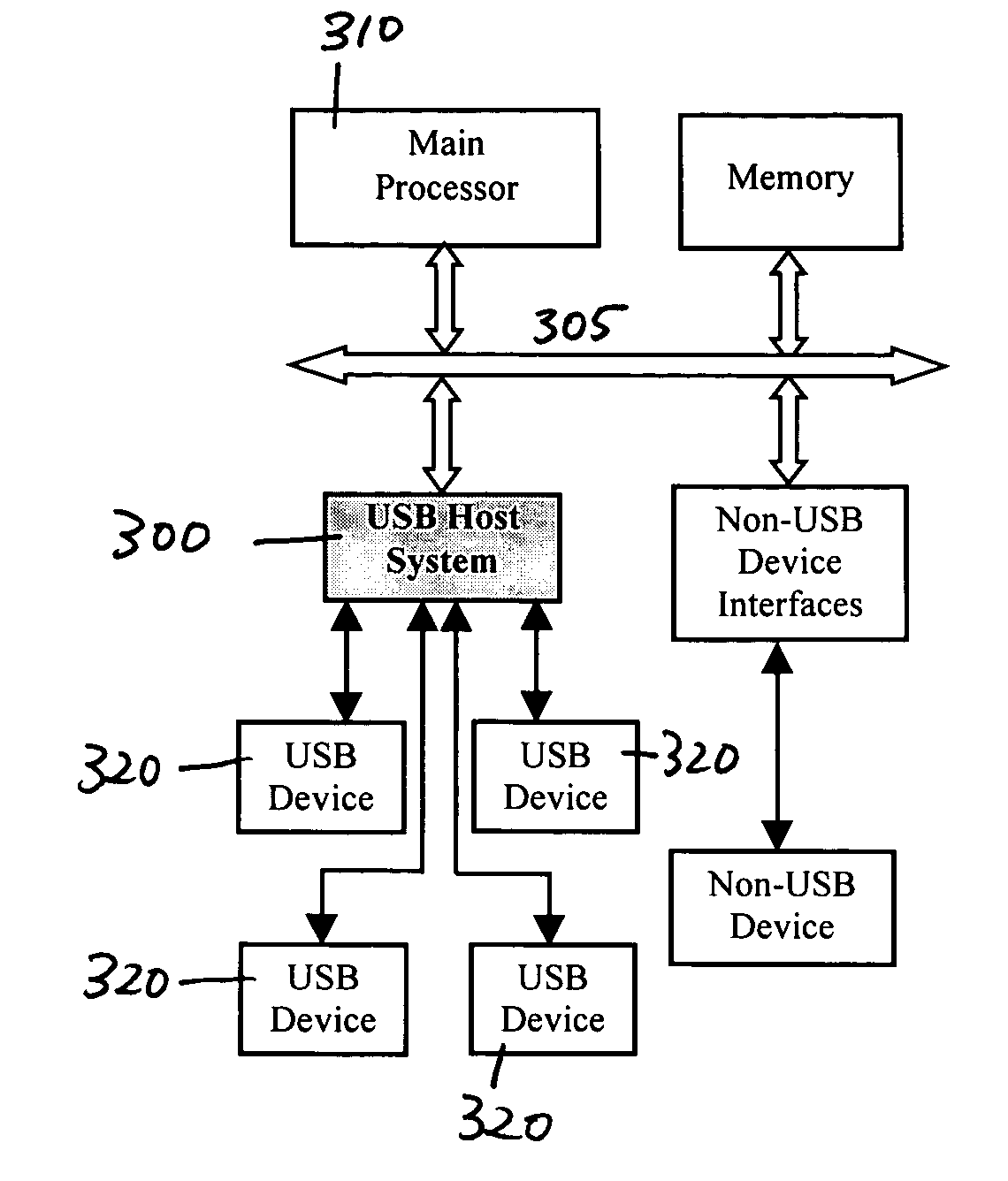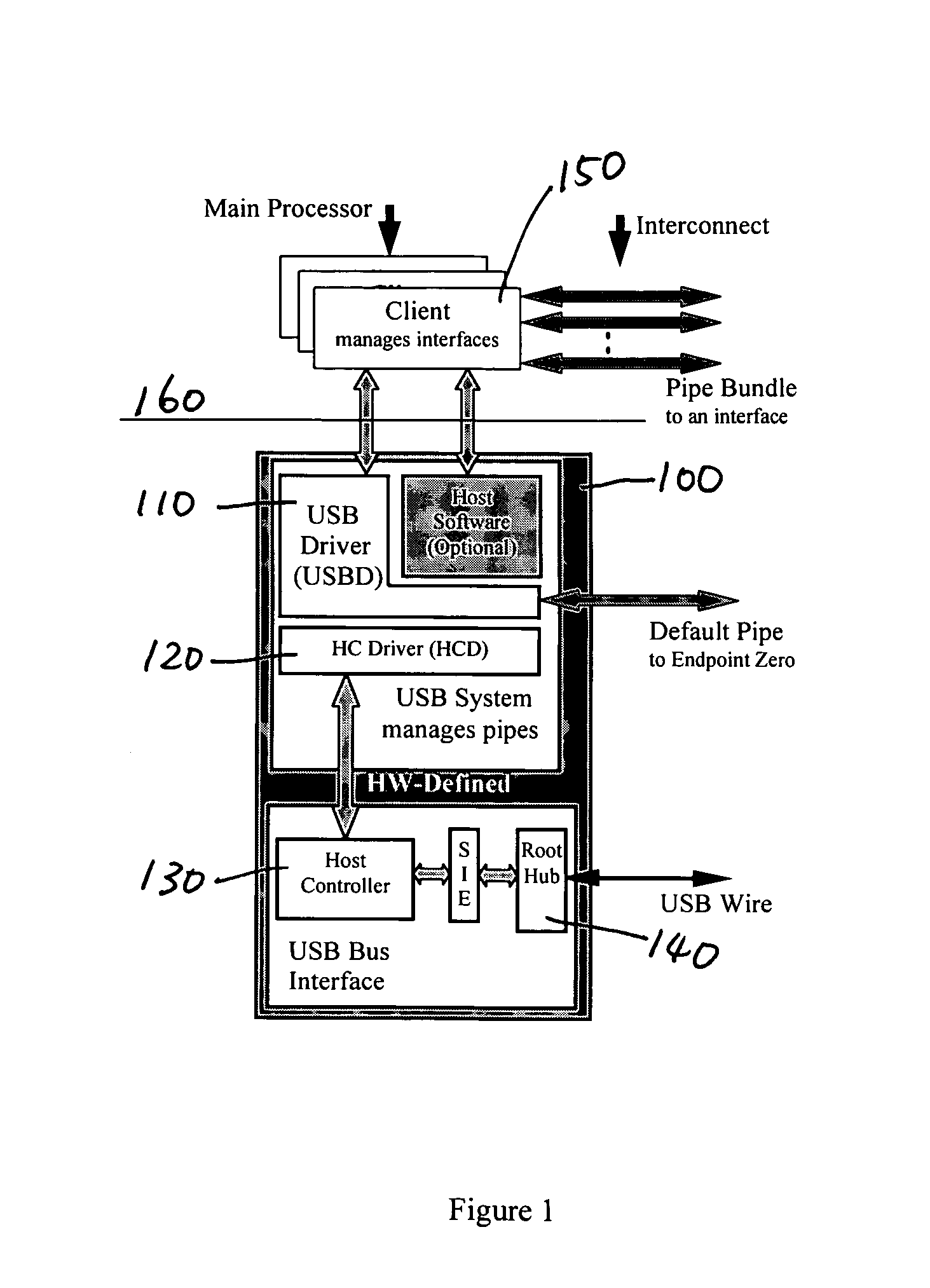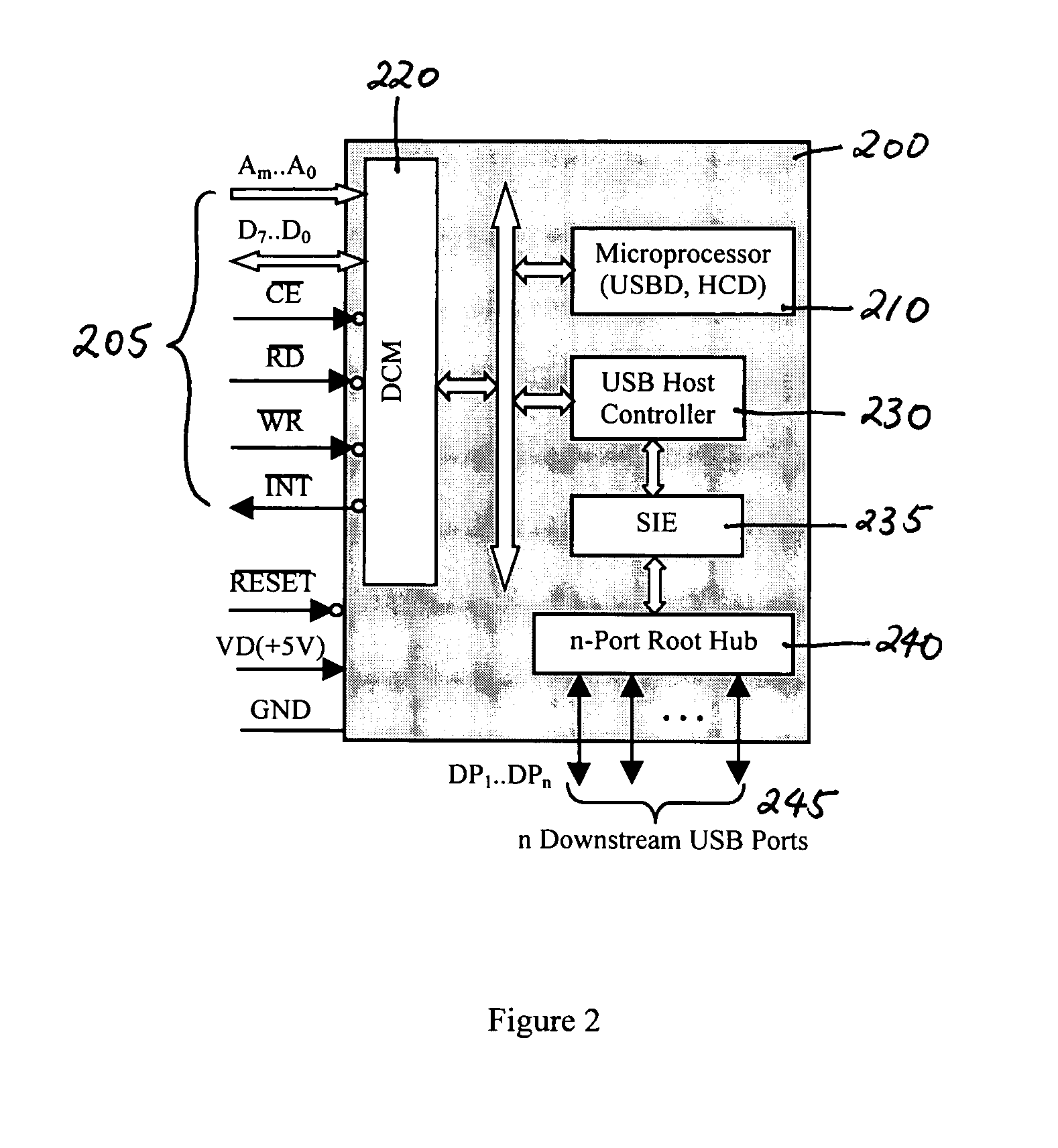System for transferring data using a USB host system with a dedicated processor
a host system and data transfer technology, applied in the field of usb host systems, can solve the problems of insufficient system resources on the main processor, application programs, and complicated hardware and software designs, and achieve the effects of reducing manpower and resource requirements, shortening the time-to-market of embedded system products, and being convenient to us
- Summary
- Abstract
- Description
- Claims
- Application Information
AI Technical Summary
Benefits of technology
Problems solved by technology
Method used
Image
Examples
Embodiment Construction
[0035]Reference will now be made to the drawings wherein like numerals refer to like parts throughout. An embodiment of this invention is a system containing the hardware and firmware implementing all the functions enclosed in rectangle 100 in FIG. 1, including the USBD 110, HCD 120, HC 130 and root hub 140. The block diagram of a typical embodiment of this invention is shown in FIG. 2. USBD 110 and HCD 120 are run on the processor 210 in the USB host system. The USB host system 200 interfaces an Application Processor through a standard microprocessor bus interface 205. FIG. 3 shows a typical application of this invention. The partition of one embodiment of the memory space of the DCM is shown in FIG. 400.
[0036]The USB Diver Interface (USBDI) 160, i.e., the interface between the Main Processor / user Client Software and the USB host system of this invention, consists of exchanging predefined records via the DCM. In one embodiment of this invention, the predefined records include the f...
PUM
 Login to View More
Login to View More Abstract
Description
Claims
Application Information
 Login to View More
Login to View More - R&D
- Intellectual Property
- Life Sciences
- Materials
- Tech Scout
- Unparalleled Data Quality
- Higher Quality Content
- 60% Fewer Hallucinations
Browse by: Latest US Patents, China's latest patents, Technical Efficacy Thesaurus, Application Domain, Technology Topic, Popular Technical Reports.
© 2025 PatSnap. All rights reserved.Legal|Privacy policy|Modern Slavery Act Transparency Statement|Sitemap|About US| Contact US: help@patsnap.com



